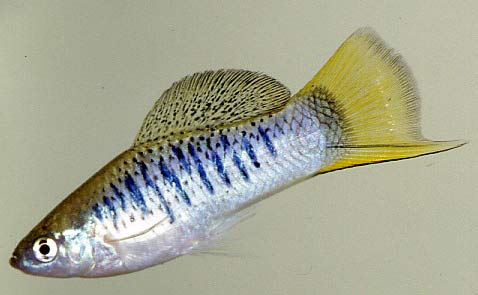Fish Mating Preferences Change with Age

A new study shows that imperfect male swordtail fish are all the rage of the mating scene among older females of their species.
Over their lifetimes, female fish switch from preferring males with symmetrical patterns to those with asymmetrical designs, a new study finds. Scientists now wonder if human mating preferences might shift with age, too.
"What this tells us is that females are most likely weighing several different factors when they choose a mate," said Molly Morris, an associate professor of biological sciences at Ohio University.
Previous studies showed females preferred mates that were symmetrical, an indicator of good genes. However, Morris' study and several others have found that as female fish get older, their mating preferences completely reverse.
"We are hypothesizing that some other factor, like predation, could outweigh the benefit of the good genes for older, larger females," Morris told LiveScience.
Morris and her colleagues looked at two species of swordtail fish and compared the mating preferences of the young with the old. The smaller, younger females showed a significant preference for males with the same number of dark bars on both sides of their body. While larger, older, females preferred males with different numbers of markings on each side of their body.
The results show that preferences for symmetry are not necessarily driven by visual systems and cues. The study also provides more evidence that mate preferences for female fish can change over their lifetimes. Finally, females are likely optimizing several factors when they make mate choices, rather than basing their decision on whether a male has good genes to pass on to their offspring, Morris explained.
Sign up for the Live Science daily newsletter now
Get the world’s most fascinating discoveries delivered straight to your inbox.
The reason for the "switch" is not yet understood. The researchers are planning experiments to determine if it's simply part of a female's development over the course of her lifetime, or if it is in some way due to the experiences females have. "Older, larger females will have had more mating experience," Morris said.
The results raise questions about whether the same is true of other species. Studies that have examined what male and female human's consider attractive show that both sexes find symmetrical faces more appealing. However, these studies have primarily examined young people. In one recent study, the average age of the participants was around 20.
"It will be interesting to see if the preferences of 30- and 40-year-olds are different than the 20-year-olds," Morris said. "What we look for in a mate could shift as we get older."
The study was detailed online recently by the journal Biology Letters.










